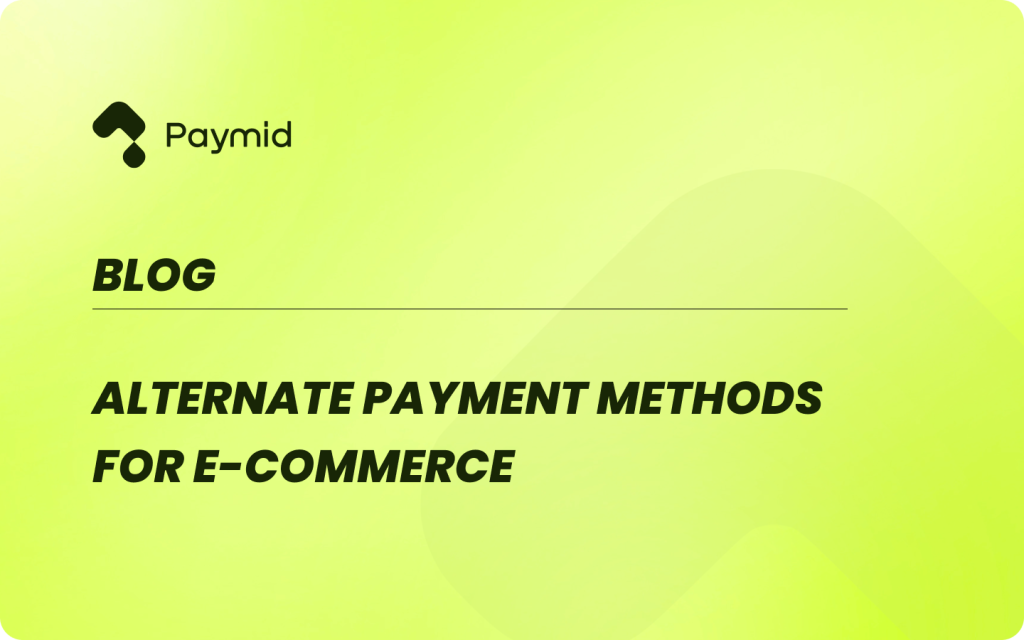Alternate Payment Methods for E-commerce – Expert Tips

Have you ever wondered why some e-commerce sites offer a wide range of payment options beyond traditional credit cards? The rise of alternate payment methods has become a game-changer for online businesses.
From digital wallets like PayPal and Apple Pay to Buy Now Pay Later services like Klarna, a variety of options are reshaping the e-commerce landscape. As online shopping continues to grow, businesses need to adapt to meet customer preferences.
⚡ Key Takeaways
Understanding The Landscape Of E-commerce Payments
The e-commerce industry is experiencing a significant shift in payment methods, moving beyond traditional credit cards to embrace a variety of alternative options. This evolution has a profound impact on how businesses and consumers interact in the digital marketplace.
1. Traditional vs. Alternative Methods
The traditional online payment process involves several key actors: the merchant, issuing bank, payment gateway/processor, and acquiring bank [1]. While credit and debit cards remain popular, alternative payment methods are gaining traction.
These include cryptocurrencies like Bitcoin, which offers lower fees, faster transactions, and increased privacy compared to traditional online banking [2]. Digital wallets such as Apple Pay and Google Pay have also emerged as convenient and secure alternatives, allowing users to store payment information and make transactions electronically [3].
2. Regional Preferences
Payment preferences vary widely across regions, making it crucial for businesses to offer locally preferred options. In continental Europe, credit card ownership ranges from 35% in Portugal to 51% in Germany and Spain, while the UK has a higher ownership rate of 62% [4].
Eastern European countries show different trends, with cash on delivery being the most popular method in countries like the Czech Republic and Romania. To increase conversions, businesses need to provide a localized payment experience that aligns with regional preferences and builds trust.
3. Mobile Commerce Impact
The rise of mobile commerce (m-commerce) has revolutionized the e-commerce landscape. With 53% of people using digital wallets more than traditional payment methods in 2023, and 64% using them at least as much as traditional methods, the trend towards mobile payments is clear [5].
M-commerce offers benefits such as convenience, real-time customer engagement, and valuable data insights. It also opens up new opportunities for businesses to reach a global audience and streamline the checkout process through innovative mobile payment solutions [6].
Popular Alternative Payment Methods Worldwide
1. PayPal
PayPal remains a leading alternative payment method globally. It offers a secure platform for online transactions, allowing users to make purchases without sharing their financial information with merchants. PayPal’s popularity stems from its ease of use and wide acceptance across various e-commerce platforms.
2. Alipay
Alipay, founded by Jack Ma in 2004, has become a dominant force in China’s digital payment landscape. With a 54% market share, Alipay outperforms its competitors in the region.
The platform offers a range of services beyond simple payments, including online bill payments and money transfers. Alipay’s success is partly due to its integration with the Alibaba ecosystem, making it a convenient choice for Chinese consumers.
3. WeChat Pay
WeChat Pay, Alipay’s main competitor in China, holds a 42% market share. Together, Alipay and WeChat Pay are forecast to reach a combined user base of nearly 2.5 billion users [7].
WeChat Pay’s success is largely due to its integration with the WeChat social platform, allowing users to make payments within the app they already use for messaging and social networking.
3. Klarna
Klarna has revolutionized online shopping with its “Buy Now, Pay Later” (BNPL) model. Available in 45 countries, Klarna processes 2 million transactions daily among its 150 million active users.
The platform offers flexible payment options, including paying in full within 30 days or splitting purchases into four interest-free installments. Klarna’s success lies in its ability to provide value to both consumers and merchants, offering payment flexibility and immediate payouts respectively [8].
4. Apple Pay
Apple Pay has gained significant traction as a mobile payment method. It allows users to make secure payments using their iPhone, Apple Watch, or other Apple devices.
Apple Pay’s popularity is due to its seamless integration with Apple’s ecosystem and its focus on security, using Face ID, Touch ID, or passcode for authentication [9]. The service is widely accepted, with over 85% of retailers in the U.S. supporting Apple Pay.
These alternative payment methods have transformed the e-commerce landscape, offering consumers more choices and convenience in how they pay for goods and services online.[10]
Overcoming Challenges in Adopting Alternative Payment Methods
1. Technical Integration
Integrating new cashless systems can present major hurdles for businesses looking to expand their payment options. To simplify this process, many companies are turning to all-in-one e-commerce solutions. These platforms, like Shopify, enable even non-technical users to build professional e-commerce websites with user-friendly tools.
However, while convenient, built-in payment solutions are often limited and only suitable for small, new sellers. To address more advanced payment needs, some platforms allow payment providers to integrate external solutions, offering users more choice and flexibility [11].
2. Fraud Prevention
Payment fraud poses a significant threat to the security and trustworthiness of payment systems. In 2020 alone, losses from payment fraud were estimated at over $42 billion worldwide. To combat this, businesses must implement robust fraud prevention strategies.
This includes using secure payment methods, such as EMV chip cards and encrypted online payment systems, as well as implementing strong authentication measures like two-factor authentication.
Additionally, businesses should regularly monitor accounts for suspicious activity and use fraud detection software to identify unusual spending patterns [12].
3. Regulatory Compliance
Regulatory compliance is a critical aspect of adopting alternative payment methods. Payment service providers face strict licensing, operational, and compliance requirements, which can vary depending on factors such as the location of the payee and recipient, payment amount, and method.
Key compliance areas include Know Your Customer (KYC) procedures, Anti-Money Laundering (AML) programs, and data privacy and security standards like the Payment Card Industry Data Security Standard [13]. Failure to comply with these regulations can result in severe consequences, including fines, legal action, and potential criminal charges.
Future Trends in E-commerce Payment Methods
1. Biometric Payments
The future of e-commerce payments is heading towards more secure and convenient methods, with biometric payments leading the way. This technology uses unique physical characteristics like fingerprints, facial features, or even palm prints to authenticate transactions.
Amazon One’s pay-by-palm system has brought this technology to the forefront, showcasing its potential for swift and seamless checkout experiences.
Biometric payments offer several advantages:
- Enhanced fraud resistance through multi-factor authentication.
- Reduced fraud rates for card issuers.
- Strengthened customer loyalty programs.
- Improved personalization in shopping experiences.
However, challenges remain, particularly concerning data privacy and storage. The industry is working to establish standards and requirements to ensure security and privacy are fundamental as biometric payments become more widespread [14].
2. Voice-Activated Payments
Voice-activated payments are gaining traction, with technologies like Amazon’s Alexa, Google Assistant, and Apple’s Siri paving the way. In 2020, hundreds of millions of Americans were already using voice control technology, a number expected to rise as the technology becomes more ubiquitous.
Current voice-enabled payment capabilities include:
- Sending funds electronically using transfer services like Venmo and PayPal.
- Making online purchases through Amazon using Alexa.
- Ordering from specific merchants like Starbucks.
Future advancements in voice-enabled payments are likely to include deeper integration with mobile banking apps, improved security measures, and a more interactive “concierge” experience.
3. Blockchain and Cryptocurrencies
Blockchain technology and cryptocurrencies are set to revolutionize e-commerce payments. As of June 2021, there were 221 million identity-verified cryptoasset users worldwide, a significant increase from just 5 million in 2016 [15].
Major online retailers like Microsoft, Home Depot, and Tesla have already begun accepting cryptocurrencies in their online stores.
Blockchain technology offers several benefits for e-commerce:
- Improved inventory management through smart contracts.
- Authentication of customer reviews.
- Enhanced reward point systems.
- Efficient warranty documentation storage.
As cryptocurrency adoption grows, it’s likely to become an increasingly important payment option in the e-commerce landscape.
Read More:
- Payment Optimization For Business [Everything To Know]
- Payment Routing: Best Practices, Types, And Tips
- Smart Routing Payment: Components, Benefits & Process
References
[1] – Checkout.com – What are alternative payment methods (APMs)? https://www.checkout.com/blog/what-are-alternative-payment-methods
[2] – Utica – The Risk of Alternative Internet Payments Susan Lynch, Director of Financial Solutions Searchspace https://www.utica.edu/academic/institutes/ecii/publications/articles/BA2A12BE-9368-5FBD-4B580A3E09888045.pdf
[3] – Eprints Uklo – THE USE OF ALTERNATIVE PAYMENT METHODS AS A RESULT OF COVID 191 Marina Blazhekovikj Toshevski, PhD Faculty of Information and Communication technologies, North Macedonia https://eprints.uklo.edu.mk/id/eprint/8760/1/THE%20USE%20OF%20ALTERNATIVE%20PAYMENT%20METHODS.pdf
[4] – Statista – Credit card penetration in Europe 2020, by country. https://www.statista.com/forecasts/1150260/credit-card-penetration-in-europe-by-country
[5] – Statista – E-commerce: popular payment methods in Germany | Statista. (2023, October 11) https://www.statista.com/statistics/434341/e-commerce-popular-payment-methods-germany/
[6] – Doi.org – 2 More convenience with alternative payment methods https://doi.org/10.1515/9783110704907-002
[7] – HCP-LAN – Quality Care, Improved Health, and Lower Costs. https://hcp-lan.org/apm-framework/
[8] – IR – Why alternative payment methods matter to your business https://www.ir.com/guides/alternative-payment-methods
[9] – IR Unilag – Alternative payment systems implication for currency demand and monetary policy in developing economy: a case study of Nigeria. https://ir.unilag.edu.ng/items/cd9c0dd1-5ed4-4f5d-a2a8-a918c9a77173
[10] – Doi.org Consumer Surplus of Alternative Payment Methods: Paying Uber with Cash. https://doi.org/10.3386/w28133
[11] – Worldbank – PAYMENT SYSTEMS WORLDWIDE A SNAPSHOT SUMMARY OUTCOMES OF THE FOURTH GLOBAL PAYMENT SYSTEMS SURVEY SEPTEMBER 2018 https://thedocs.worldbank.org/en/doc/591241545960780368-0130022018/original/PaymentSystemsWorldwideASnapshotSummaryOutcomesoftheFourthGlobalPaymentSystemsSurvey.pdf
[12] – Doi.org – Comparative analyses of digital payment methods from the pre and post COVID-19 perspective. https://doi.org/10.1016/j.procs.2022.09.530 [13] – Doi.org – The choice of payment method in online stores depending on demographic characteristics. Journal of Modern Science https://doi.org/10.13166/jms/177175 [14] – Doi.org – Rethinking royalties – alternative payment systems on music streaming platforms. https://doi.org/10.2139/ssrn.4561765 [15] – Statista – Crypto users worldwide 2016-2023. https://www.statista.com/statistics/1202503/global-cryptocurrency-user-base/
